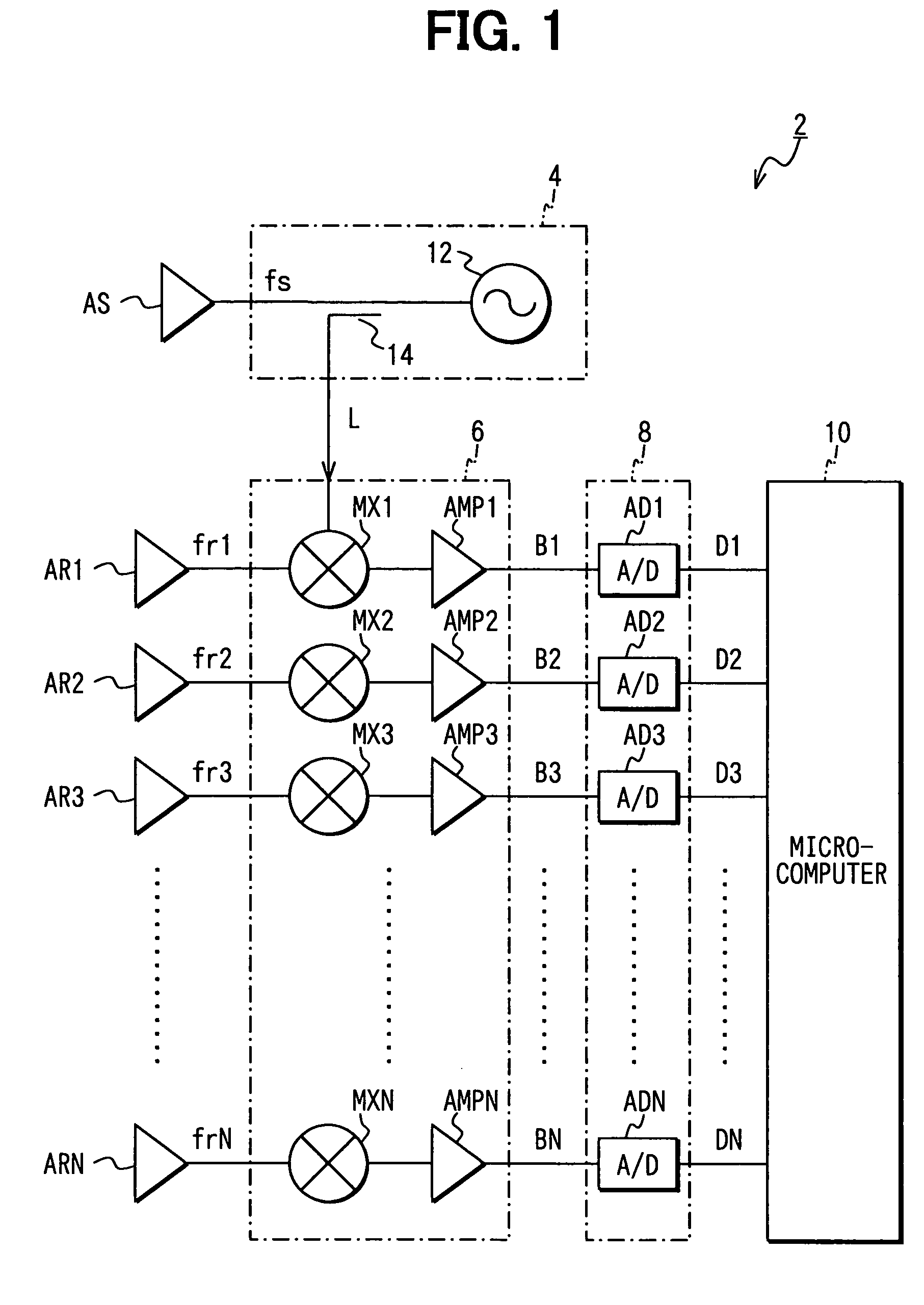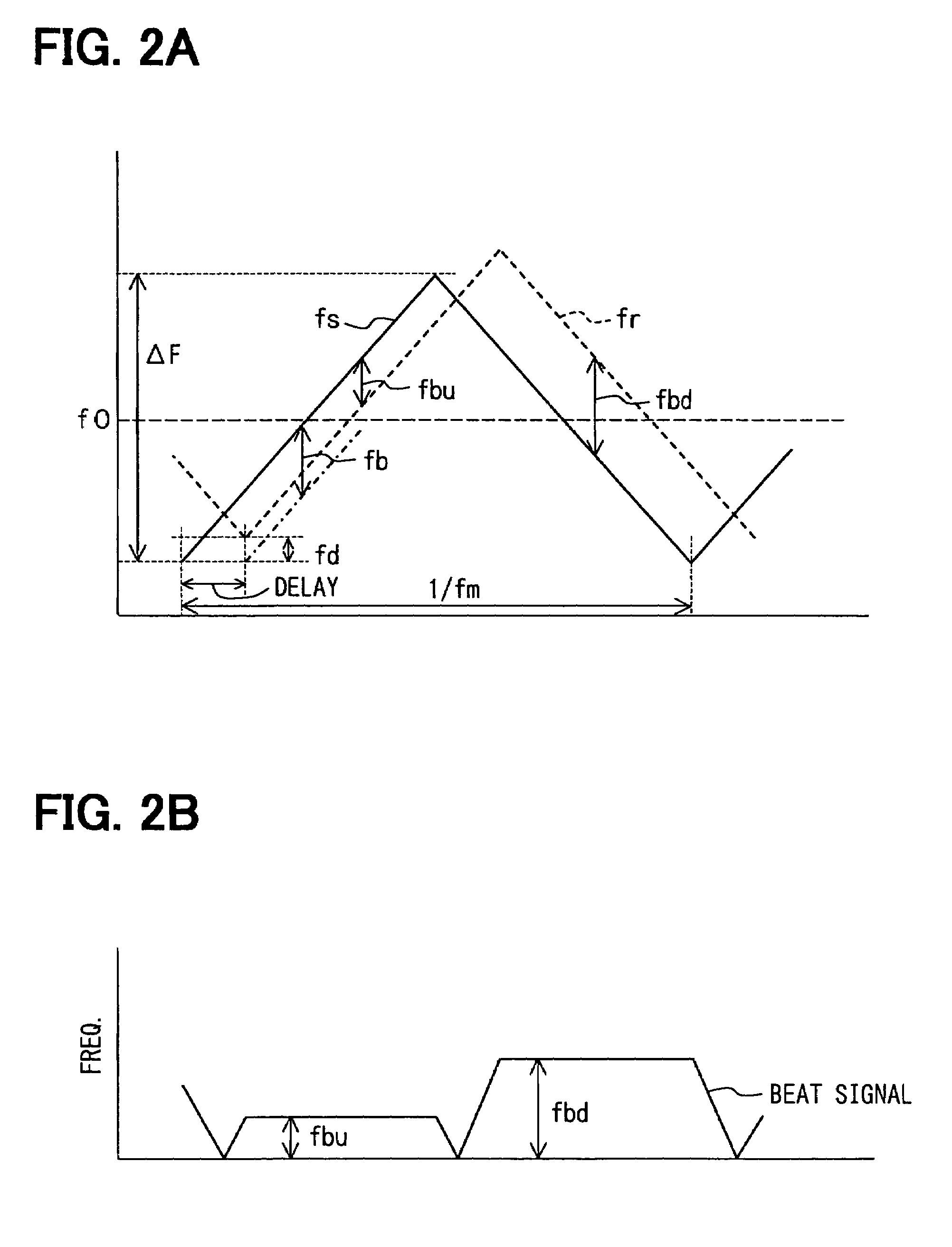Radar device for vehicle and method for adjusting mount angle for mounting radar device on vehicle
a technology for radar devices and vehicles, applied in measurement devices, using reradiation, instruments, etc., can solve the problems of difficult to keep the precision, and the adjusting work of the mount angle has been required a lot of labor, so as to achieve the effect of easy and correct adjustment of the mount angl
- Summary
- Abstract
- Description
- Claims
- Application Information
AI Technical Summary
Benefits of technology
Problems solved by technology
Method used
Image
Examples
first embodiment
(First Embodiment)
[0032]A first embodiment according to the invention will be described hereunder with reference to the accompanying drawings. FIG. 1 is a block diagram showing the overall construction of a vehicle radar device according to the embodiment.
[0033]As shown in FIG. 1, a radar device 2 according to this embodiment is equipped with a transmitter 4 for transmitting a radar wave in an extremely high frequency band (millimetric-wave band) through a transmission antenna AS. The transmitter 4 comprises a high-frequency oscillator 12 for generating a high-frequency signal of the extremely high frequency band which is modulated so that gradual increase and gradual reduction of the frequency thereof with time lapse are alternately repeated, and a distributor 14 for distributing the power of the output of the high-frequency oscillator 12 to a transmission signal fs and a local signal L. The transmission signal fs is supplied to the transmission antenna AS and the local signal L is...
second embodiment
(Second Embodiment)
[0067]Next, a second embodiment according to the invention will be described. The construction of the radar device according to this embodiment is substantially the same as the first embodiment.
[0068]In this embodiment, the same signal processing as the first embodiment is normally carried out on the reception signals fr1 to frN-1 of the reception antenna elements AR1 to ARN-1 having the non-displaced reception beam axes to calculate the distance D to the reflection object, the relative speed V between the vehicle concerned and the reflection object and the direction to the reflection object. When the distance D to the reflection object is less than a predetermined distance (i.e., short distance), the distance D and the relative speed V between the vehicle concerned and the reflection object are calculated on the basis of the reception signal frN of the reception antenna element ARN.
[0069]The reception beam axis of the reception antenna element ARN is more downwar...
PUM
 Login to View More
Login to View More Abstract
Description
Claims
Application Information
 Login to View More
Login to View More - R&D
- Intellectual Property
- Life Sciences
- Materials
- Tech Scout
- Unparalleled Data Quality
- Higher Quality Content
- 60% Fewer Hallucinations
Browse by: Latest US Patents, China's latest patents, Technical Efficacy Thesaurus, Application Domain, Technology Topic, Popular Technical Reports.
© 2025 PatSnap. All rights reserved.Legal|Privacy policy|Modern Slavery Act Transparency Statement|Sitemap|About US| Contact US: help@patsnap.com



